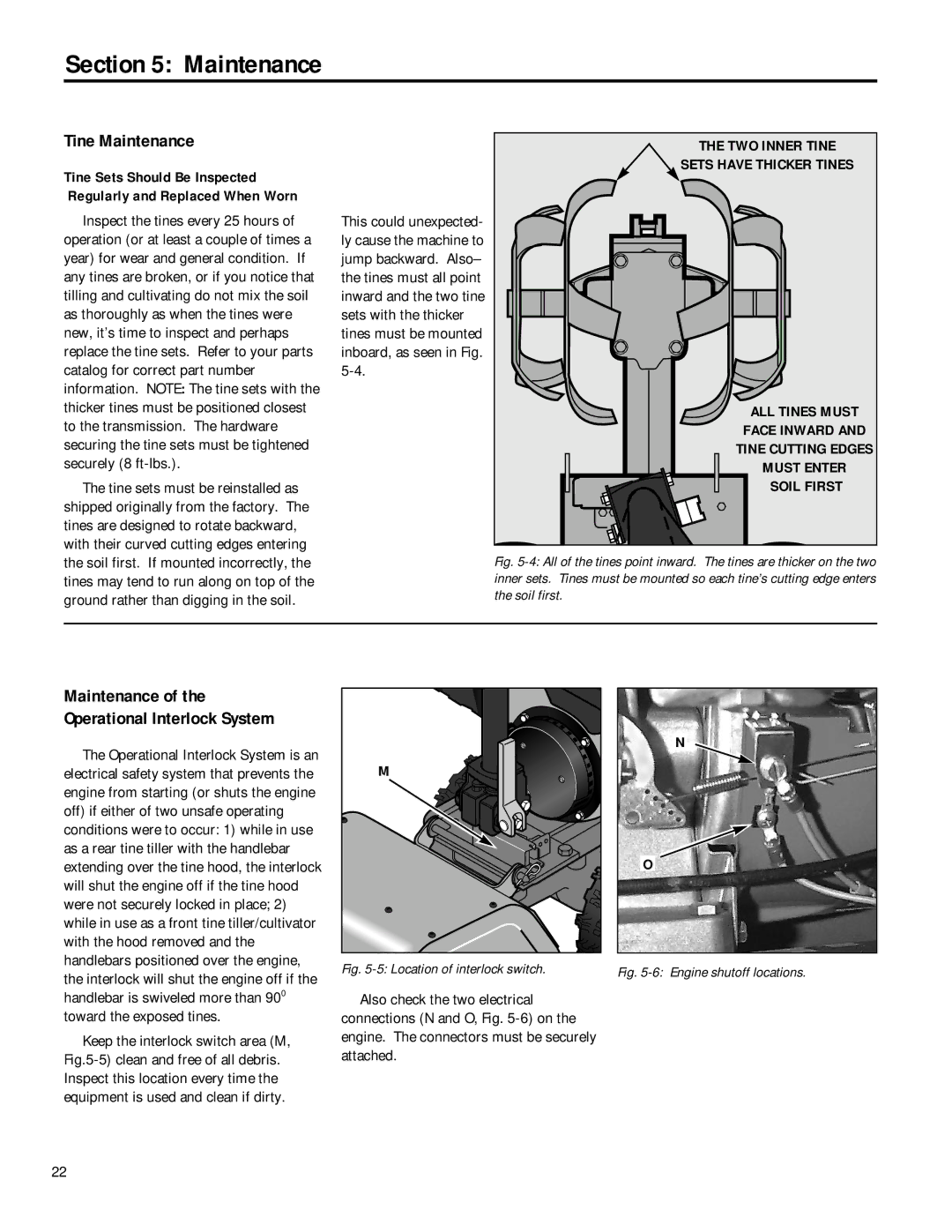
Section 5: Maintenance |
|
Tine Maintenance | THE TWO INNER TINE |
Tine Sets Should Be Inspected | SETS HAVE THICKER TINES |
| |
Regularly and Replaced When Worn |
|
Inspect the tines every 25 hours of | This could unexpected- |
operation (or at least a couple of times a | ly cause the machine to |
year) for wear and general condition. If | jump backward. Also– |
any tines are broken, or if you notice that | the tines must all point |
tilling and cultivating do not mix the soil | inward and the two tine |
as thoroughly as when the tines were | sets with the thicker |
new, it’s time to inspect and perhaps | tines must be mounted |
replace the tine sets. Refer to your parts | inboard, as seen in Fig. |
catalog for correct part number | |
information. NOTE: The tine sets with the |
|
thicker tines must be positioned closest | ALL TINES MUST |
to the transmission. The hardware | FACE INWARD AND |
securing the tine sets must be tightened | TINE CUTTING EDGES |
securely (8 | MUST ENTER |
The tine sets must be reinstalled as | SOIL FIRST |
shipped originally from the factory. The |
|
tines are designed to rotate backward, |
|
with their curved cutting edges entering | Fig. |
the soil first. If mounted incorrectly, the | |
tines may tend to run along on top of the | inner sets. Tines must be mounted so each tine’s cutting edge enters |
ground rather than digging in the soil. | the soil first. |
Maintenance of the |
|
| |
Operational Interlock System |
|
| |
The Operational Interlock System is an |
| N | |
M |
| ||
electrical safety system that prevents the |
| ||
engine from starting (or shuts the engine |
|
| |
off) if either of two unsafe operating |
|
| |
conditions were to occur: 1) while in use |
|
| |
as a rear tine tiller with the handlebar |
| O | |
extending over the tine hood, the interlock |
| ||
will shut the engine off if the tine hood |
|
| |
were not securely locked in place; 2) |
|
| |
while in use as a front tine tiller/cultivator |
|
| |
with the hood removed and the |
|
| |
handlebars positioned over the engine, | Fig. | Fig. | |
the interlock will shut the engine off if the | |||
|
| ||
handlebar is swiveled more than 900 | Also check the two electrical |
| |
toward the exposed tines. | connections (N and O, Fig. |
| |
Keep the interlock switch area (M, | engine. The connectors must be securely |
| |
| attached. |
| |
Inspect this location every time the |
|
| |
equipment is used and clean if dirty. |
|
|
22
